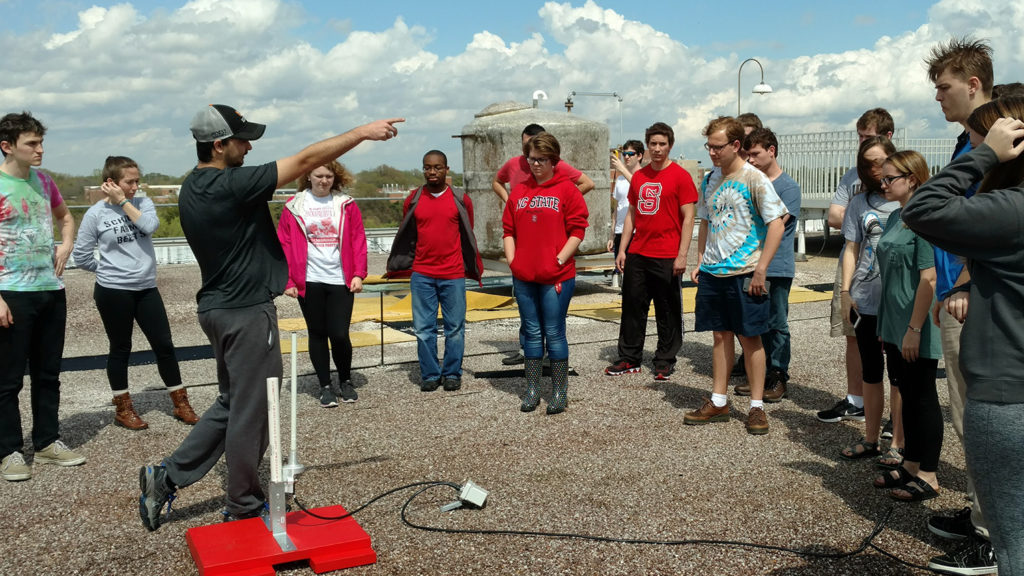Atmospheric Sciences Research
The department offers research programs that cover the range of the atmospheric sciences — from air composition to storm-chasing to climatology.

Atmospheric Sciences Research
Anantha Aiyyer – Mesoscale Processes, Regional Weather and Climate, Storms and Hazards
Viney Aneja – Atmospheric Chemistry and Air Quality, Cloud Chemistry and Microphysics, Remote Sensing, Biosphere-Atmosphere Interactions, Climate change
Kathie Dello – Regional Weather and Climate, Weather and Climate Prediction, Storms and Hazards, Climate change
Douglas Hamilton – Air-Sea Interaction, Atmospheric Chemistry and Air Quality, Cloud Chemistry and Microphysics, Remote Sensing, Numerical Modeling, Biosphere-Atmosphere Interactions, Climate change
Gary Lackmann – Synoptic-dynamic and mesoscale meteorology, weather and climate extremes, climate change and projection, atmospheric numerical modeling, severe and hazardous weather
Sarah Larson – Air-Sea Interaction, Climate Dynamics, Weather and Climate Prediction, Numerical Modeling, Climate change
Roberto Mera – Climate change
Nicholas Meskhidze – Air-Sea Interaction, Atmospheric Chemistry and Air Quality, Cloud Chemistry and Microphysics, Remote Sensing, Boundary Layer Meteorology, Meteorological Instrumentation, Numerical Modeling, Biosphere-Atmosphere Interactions, Climate change
Matthew Parker – Mesoscale Processes, Regional Weather and Climate, Weather and Climate Prediction, Numerical Modeling, Storms and Hazards
Zhen Qu – Atmospheric Chemistry and Air Quality, Remote Sensing, Numerical Modeling, Biosphere-Atmosphere Interactions, Climate change
Camilo Rey Sanchez – Atmospheric Chemistry and Air Quality, Remote Sensing, Boundary Layer Meteorology, Meteorological Instrumentation, Biosphere-Atmosphere Interactions
Walt Robinson – Air-Sea Interaction, Climate Dynamics, Numerical Modeling, Storms and Hazards, Climate change
Lian Xie – Air-Sea Interaction, Regional Weather and Climate, Weather and Climate Prediction, Numerical Modeling, Storms and Hazards
Sandra Yuter – Cloud Chemistry and Microphysics, Mesoscale Processes, Remote Sensing, Regional Weather and Climate, Meteorological Instrumentation, Storms and Hazards